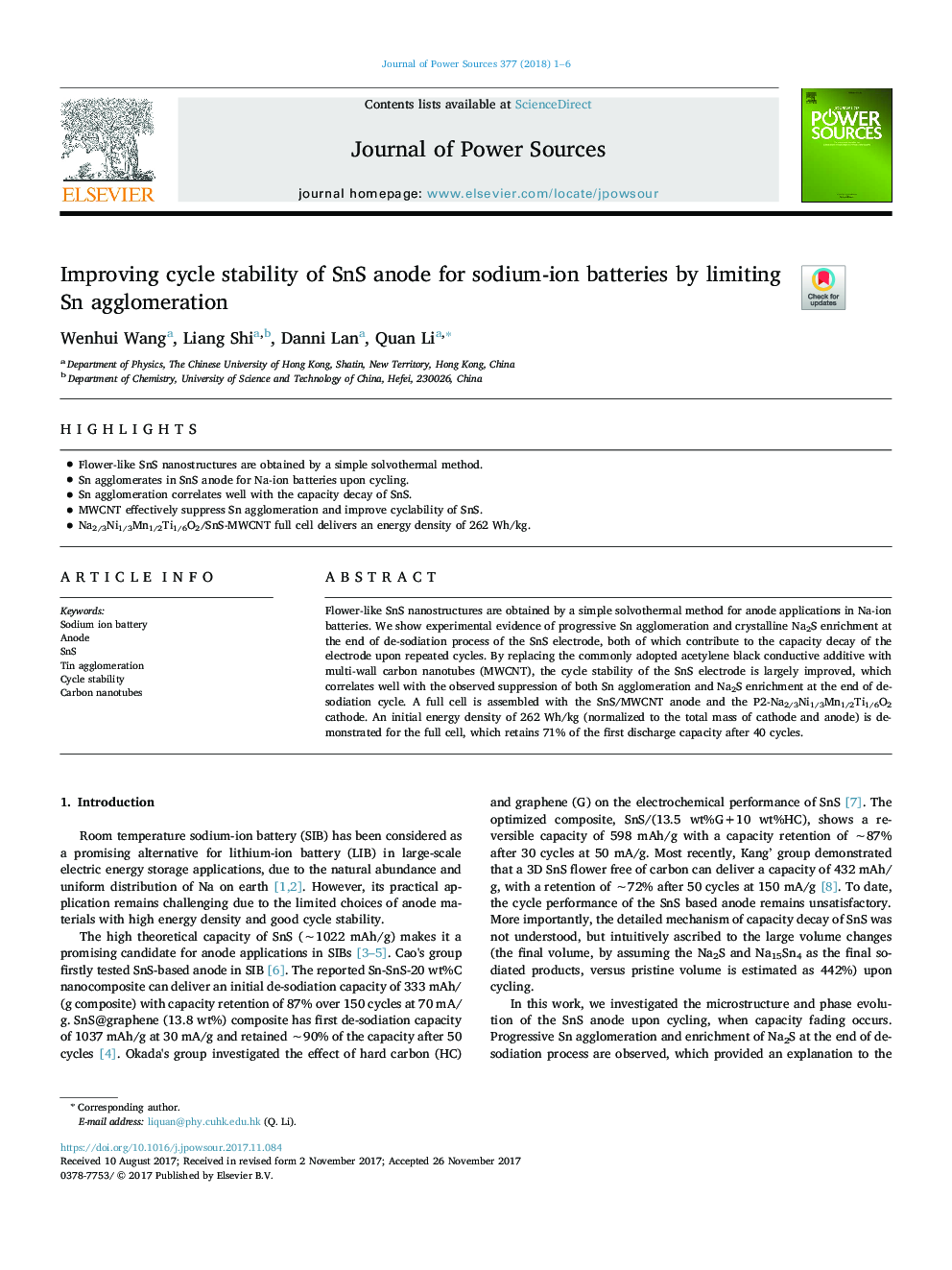| Article ID | Journal | Published Year | Pages | File Type |
|---|---|---|---|---|
| 7725747 | Journal of Power Sources | 2018 | 6 Pages |
Abstract
Flower-like SnS nanostructures are obtained by a simple solvothermal method for anode applications in Na-ion batteries. We show experimental evidence of progressive Sn agglomeration and crystalline Na2S enrichment at the end of de-sodiation process of the SnS electrode, both of which contribute to the capacity decay of the electrode upon repeated cycles. By replacing the commonly adopted acetylene black conductive additive with multi-wall carbon nanotubes (MWCNT), the cycle stability of the SnS electrode is largely improved, which correlates well with the observed suppression of both Sn agglomeration and Na2S enrichment at the end of de-sodiation cycle. A full cell is assembled with the SnS/MWCNT anode and the P2-Na2/3Ni1/3Mn1/2Ti1/6O2 cathode. An initial energy density of 262Â Wh/kg (normalized to the total mass of cathode and anode) is demonstrated for the full cell, which retains 71% of the first discharge capacity after 40 cycles.
Related Topics
Physical Sciences and Engineering
Chemistry
Electrochemistry
Authors
Wenhui Wang, Liang Shi, Danni Lan, Quan Li,
